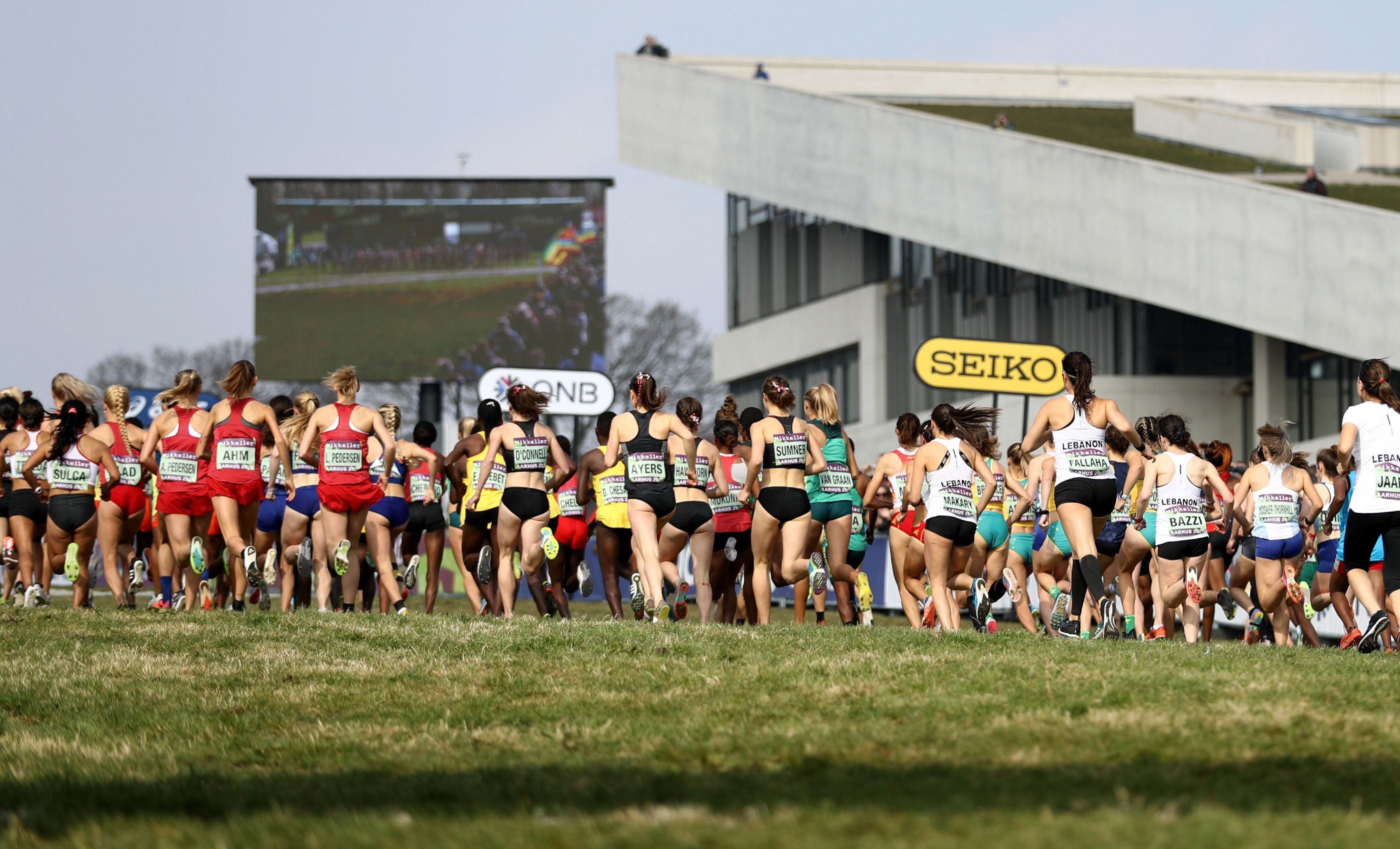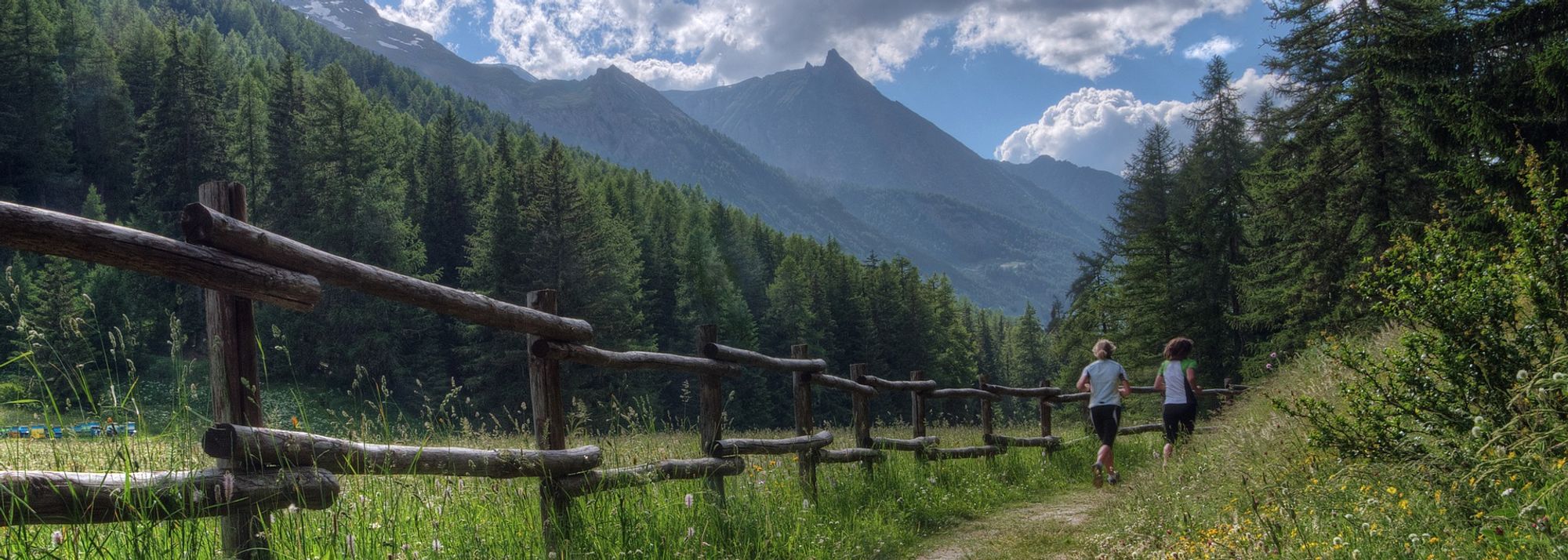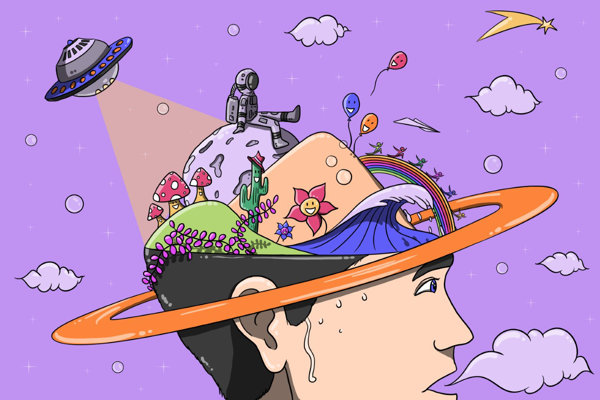Trail running in Italy (© Sergio Cerrato from Pixabay)
Have you ever finished a run and felt like you could take on the world? Or returned from a jog in a better mood or with greater mental clarity than when you set out? Then you’ve likely experienced the ‘runner’s high’ and will understand why, during times of stress or needing to calm a busy mind, running seems the perfect remedy.
“It begins with this peace of mind and then a greater ease of movement, a sense of power and confidence, optimism and hope, and you will often hear runners describe feeling loving and connected to everyone and everything,” explains Kelly McGonigal, a psychologist, educator and author of The Joy of Movement. “So, what could possibly be going on in the body and the brain that would make you feel powerful, hopeful, faster, more confident and more loving?”
Speaking during this week's World Athletics 'Run Anywhere' Webinar in collaboration with Mass Participation World, McGonigal answered that question, plus many more.
“It turns out that it’s caused by a really reliable change in brain chemistry that kicks in once you have been in continuous motion for about 20 minutes and it’s not only the endorphin rush that so many people have heard about,” McGonigal explains, as she delves into the science behind the runner’s high.
“The runner’s high is primarily driven by endocannabinoids, which are the brain chemicals that cannabis mimics, but when you are running and endocannabinoid levels naturally increase, that is what produces this powerful sense of an inner peace, empowerment and connection to others.”
Run to become a better you
“The thing that I find so fascinating about the runner’s high is it is like the perfect neurobiological change to make you a better version of yourself,” McGonigal tells Chris Robb, CEO and founder of Mass Participation World, during the webinar. “I think that is why so many people go for a run and then they feel like they can take on the world.
“And it lasts for hours. So even though you might only feel that peak high during a run or just after the run, we know that those brain changes last and they create this upward spiral, so people often report feeling less stressed, getting more things done and having better interactions with other people, for hours after a run.”
Hunting that high
“There are a few things you can do if you want to get the high a little bit faster,” McGonigal says. “For example, listening to music early in a run can actually kick start the process – release more endorphins and dopamine and adrenalin – so that you can start to feel some of that high sooner.
“The more you run or exercise, your brain actually learns how to more reliably produce that high. Part of that is because exercise, and running in particular, has this interesting effect on your brain where it strengthens your reward system and that includes endocannabinoids and endorphins. All the brain chemicals that make you feel good and that help you be motivated – exercise actually strengthens that system so that it kicks in sooner, you can sustain it longer and you get a bigger jolt of joy, hope or pride, from anything that would naturally trigger that system, and part of that includes the runner’s high.
“It seems to take about six weeks of regular training for people to see these structural changes in the brain that make it easier not only to get the runner’s high, but to experience more joy, pleasure, hope and motivation in everyday life. This is one of the reasons that running is such a powerful antidepressant and so good for our mental health, because it changes the brain in this way.”
Moving forward together
One of the many challenges posed by the pandemic has been the restriction on in-person interactions, with virtual and solo events having replaced mass participation races. As we edge closer to the return of more traditional event forms, that could further impact our enjoyment of the activity, McGonigal adds.

The senior women's race at the 2019 World Athletics Cross Country Championships in Aarhus (© Getty Images)
“Humans have always needed to move together to survive and to thrive. A race or an event is basically a way to rehearse our fundamental human interdependence,” she says. “We know that when you move with other people, you feel like you are part of a pack and you are all headed in the same direction, even if there’s an element of competition in there – your brain interprets that as being a part of something bigger than yourself.
“There are all sorts of words that people use to describe it – there’s ‘muscular bonding’, ‘we-agency’ and ‘collective joy’ – but we know that we are wired to experience a massive endorphin rush when we move with other people. A sense of being connected and a sense of collective strength. What could be a better way to experience that than moving forward together?
“So many people experience that when they are part of a race but also what I have heard from so many people who engage in races is also that powerful ability to support other runners and to receive help from other runners, whether it is getting water at an aid station or encouraging someone who has slowed down a little bit and telling them that they can do it. There is something about a race that allows you to really lean into what it means to be a part of a collective effort where sometimes you are the one who needs that extra help and encouragement and sometimes you are the one that has something to offer.
“I wouldn’t underestimate the role that the aspect of events play in why people feel this tremendous sense of togetherness. That is what we need to do for all sorts of crises and challenges in life – we need to learn how to be open to the support that is available to us and also tap into our inner strength to keep going and look for how we might be able to reach out and help others.”
Green exercise
While all movement can lead to experiencing the ‘runner’s high’, McGonigal highlights the additional benefits of getting outside. “People who exercise outdoors report some really profound experiences – a tremendous sense of relief of anxiety, a feeling of being at peace or at one with the universe,” she explains.
“There is something going on when people run outdoors, it’s almost like people are having a switch flipped in their brains that puts them into this transcendence state. As it turns out, we now know from studies that when people are active outdoors it actually creates a kind of focus, mindfulness and mind quieting that looks a lot like what happens if you train in meditation for decades and spend tens of thousands of hours learning to focus the mind and calm the mind – people experience this spontaneously when they run in nature. That is part of what makes ‘green exercise’ so special. It can be a really spiritual experience for a lot of people.
“People report really feeling connected to life itself. When we are out in nature, we shift into a state of having to be aware of our environment and that really is part of what it means to be human – to figure out how to navigate the world and how to be a part of the natural world.
“When you’re talking about trail running or really challenging races, you are getting literal physical feedback from your body that says who you are is tough, who you are is capable, who you are is someone who can adapt and push through and persevere and figure things out and put one foot forward even when every cell in your body is screaming to stop. Once you have that embodied knowledge of your own strength, when other challenges come up in life, it kicks in. It is a physical memory that you are someone who can overcome obstacles, that you can do things that other people can’t or other people won’t, that when part of you wants to give up, you already know there is a part of you that will choose to keep going when it matters and that you can trust that part of yourself.”
Did you know?
“There is bacteria in dirt that actually acts as an antidepressant when you inhale it, like when you kick up dirt on the running trail,” McGonigal smiles. “It’s like in order for us to be at peace, we actually need to literally breathe in the natural world.
“It doesn’t have to be ideal running weather – it can be in the rain, it can be in the cold. Research shows that being in different types of weather and environments can bring out different benefits of green exercise. Even in the cold and rain, don’t be afraid of the outdoors. Often when you give in to allowing yourself to be a part of it, you can reap the benefits even if it’s not the ‘perfect’ run day that you imagined.”
World Athletics









